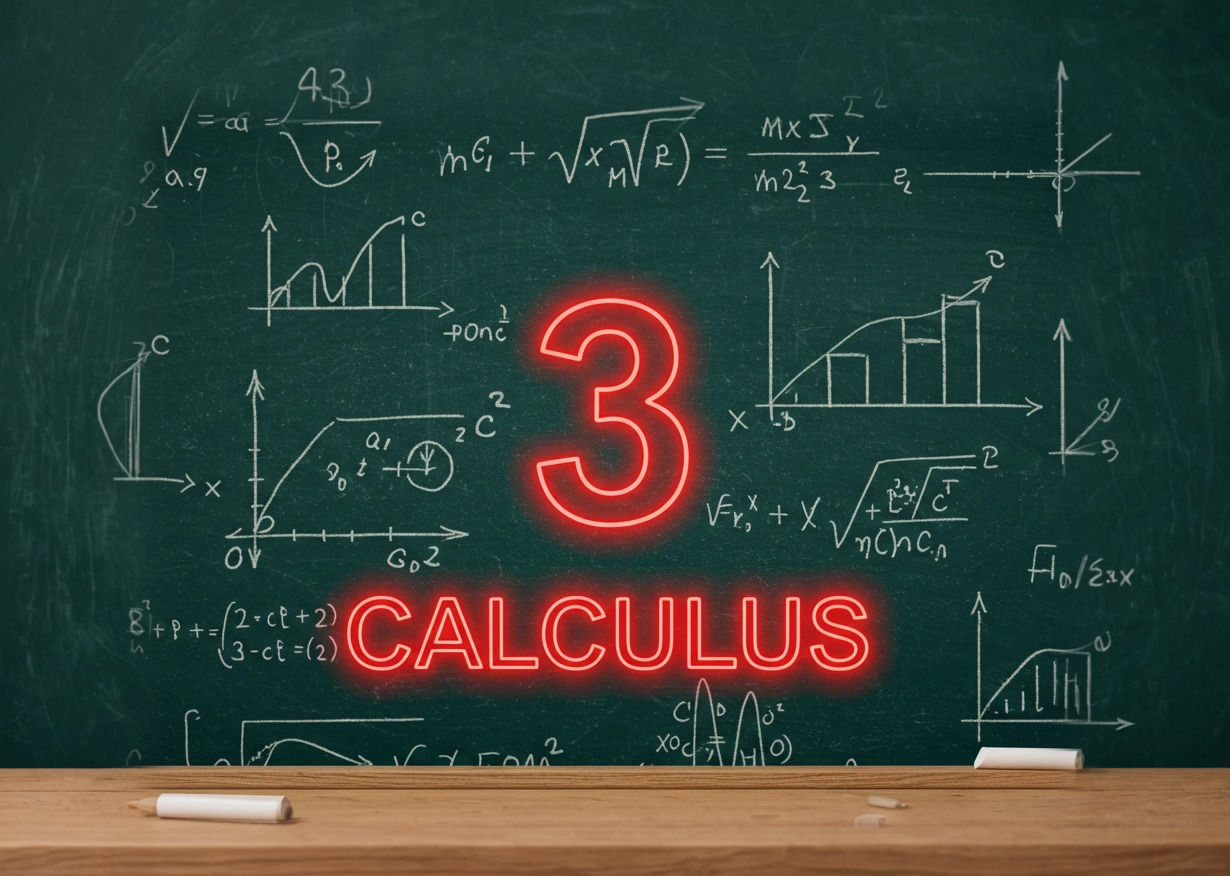
AP exams are fast approaching —unsure where to start? We’ve got you covered!
Preparing for the AP Exams doesn’t have to be stressful. Our expert-led prep will guide you every step of the way
Choose from our offering of Master Reviews
AP Calculus AB
Master Review Sessions with Mr. Sofy
GROUP SESSIONS
Struggling with AP Calculus free-response questions? Our intensive prep course is designed to help you understand the most challenging topics and boost your confidence before exam day! Over eight focused sessions, you’ll tackle Particle Motion, Rates, Graph & Function Analysis, Data Tables, Area & Volume, The Fundamental Theorem of Calculus, Differential Equations, and Related Rates & Implicit Differentiation. Through targeted practice, expert explanations, and real AP-style questions, you'll develop the problem-solving strategies needed to succeed. Don't let free-response questions hold you back! Join us and maximize your AP Calculus score!
In Session 1, Students learn how to analyze the movement of an object along a straight line using position, velocity, and acceleration as functions of time. They explore how velocity is the derivative of position and indicates direction, while acceleration is the derivative of velocity and describes changes in speed. Key concepts include determining when the particle is moving forward or backward, when it is at rest (velocity = 0), and when it is speeding up or slowing down based on the signs of velocity and acceleration. Students also calculate displacement (net change in position) and total distance traveled by integrating velocity over a time interval. These problems help develop a deeper understanding of motion by applying derivatives and integrals to real-world movement scenarios. Topics that will be covered will include, but are not limited to: Position, velocity, acceleration, direction changes, average speed, displacement, total distance, speeding up/slowing down, and moving towards or away from the origin.
- 50 US dollars
In Session 2, Students will be introduced to rate-in/rate-out questions. Students learn how to analyze situations where quantities are increasing and decreasing simultaneously over time. These problems often involve functions representing the rate at which something enters (rate-in) and the rate at which it leaves (rate-out) a system. Using definite integrals, students calculate net change over a time interval and determine the total accumulation or depletion of a quantity. Common applications include water flowing into and out of a tank, population growth with births and deaths, or money entering and leaving an account. Students also apply the Fundamental Theorem of Calculus to interpret integrals and use derivatives to determine when a system is increasing or decreasing. These problems build problem-solving skills by connecting calculus concepts to real-world contexts.
- 50 US dollars
In Session 3, Students learn to interpret key features such as critical points, increasing/decreasing intervals, concavity, and points of inflection. Given a function's graph, they identify where the derivative is positive or negative to determine where the function is increasing or decreasing. If the derivative's graph is provided, students analyze where it crosses the x-axis (critical points) and whether it changes from positive to negative (local maxima) or negative to positive (local minima). They also examine the second derivative to determine concavity and locate inflection points. These skills help students understand how the behavior of a function is connected to its derivatives, reinforcing concepts like the First and Second Derivative Tests and their applications in curve sketching and optimization problems.
- 50 US dollars
In Session 4, Students learn how to analyze numerical values of a function and its derivative, as commonly seen on the AP Calculus exam. Given a table of values for f(x), f’(x), f’’(x), Students estimate derivatives using difference quotients, approximate definite integrals using Riemann sums, and determine increasing/decreasing behavior, local extrema, and concavity based on derivative values. They also apply the Mean Value Theorem (MVT) and Intermediate Value Theorem (IVT) when given function values over an interval. These problems develop skills in interpreting information without a graph or equation, reinforcing conceptual understanding and problem-solving strategies for real-world applications.
- 50 US dollars
In Session 5, Students learn to calculate the area between curves using definite integrals and find the volume of solids using integration methods. To determine the area between two functions, they integrate the difference between the upper and lower curves over a given interval. For volume, students explore the disk/washer methods, which involves rotating a region around an axis, and volume by intersections. These concepts apply integration to real-world problems, such as finding the volume of irregular shapes or modeling physical objects, reinforcing the connection between calculus and geometry.
- 50 US dollars
In Session 6, Students learn how differentiation and integration are interconnected. Students apply these concepts to evaluate definite integrals, compute net change, and differentiate integral expressions. This theorem is essential for solving real-world accumulation problems and understanding the deep relationship between integration and differentiation.
- 50 US dollars
In Session 7, Students learn how to model and solve equations that describe how quantities change. They explore separation of variables to solve simple differential equations by rewriting them as integrals. They also interpret slope fields, which visually represent solution curves to a differential equation. Additionally, students analyze particular solutions by using initial conditions and apply exponential growth and decay models, such as population growth or radioactive decay. These concepts help students understand how calculus is used to describe dynamic systems in real-world applications, reinforcing the connection between derivatives, integrals, and modeling change.
- 50 US dollars
In Session 8, Students learn how to differentiate equations that involve multiple variables changing with respect to time. Implicit differentiation is used when a function is not explicitly solved for one variable, requiring the chain rule to differentiate both sides of an equation. This technique is essential for related rates problems, where two or more quantities are changing together. Students set up equations relating the variables, differentiate both sides with respect to time (𝑡), and solve for the unknown rate. Common applications include expanding circles, rising water levels, moving ladders, and shadows changing length, helping students apply calculus to dynamic real-world situations.
- 50 US dollars







